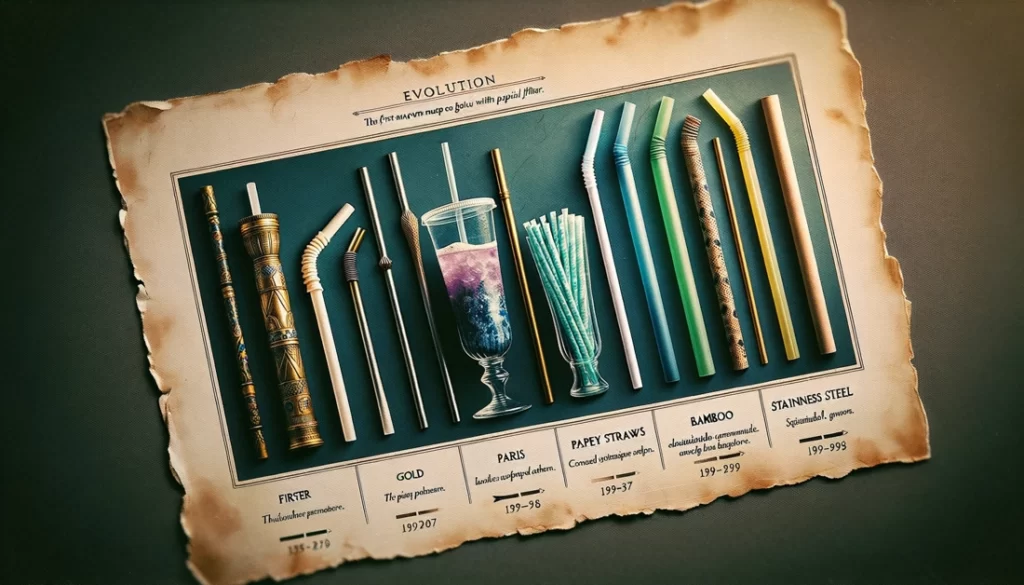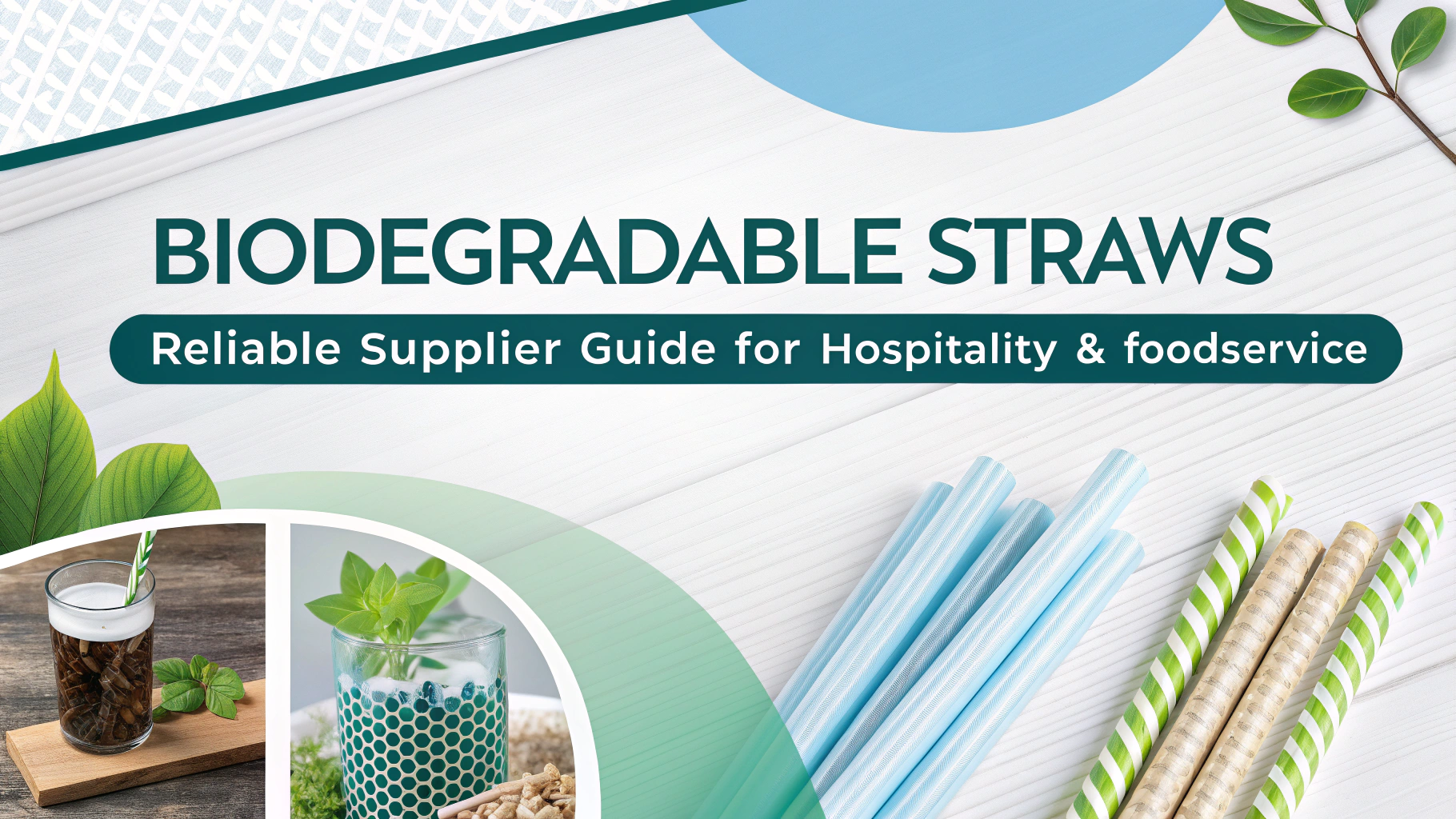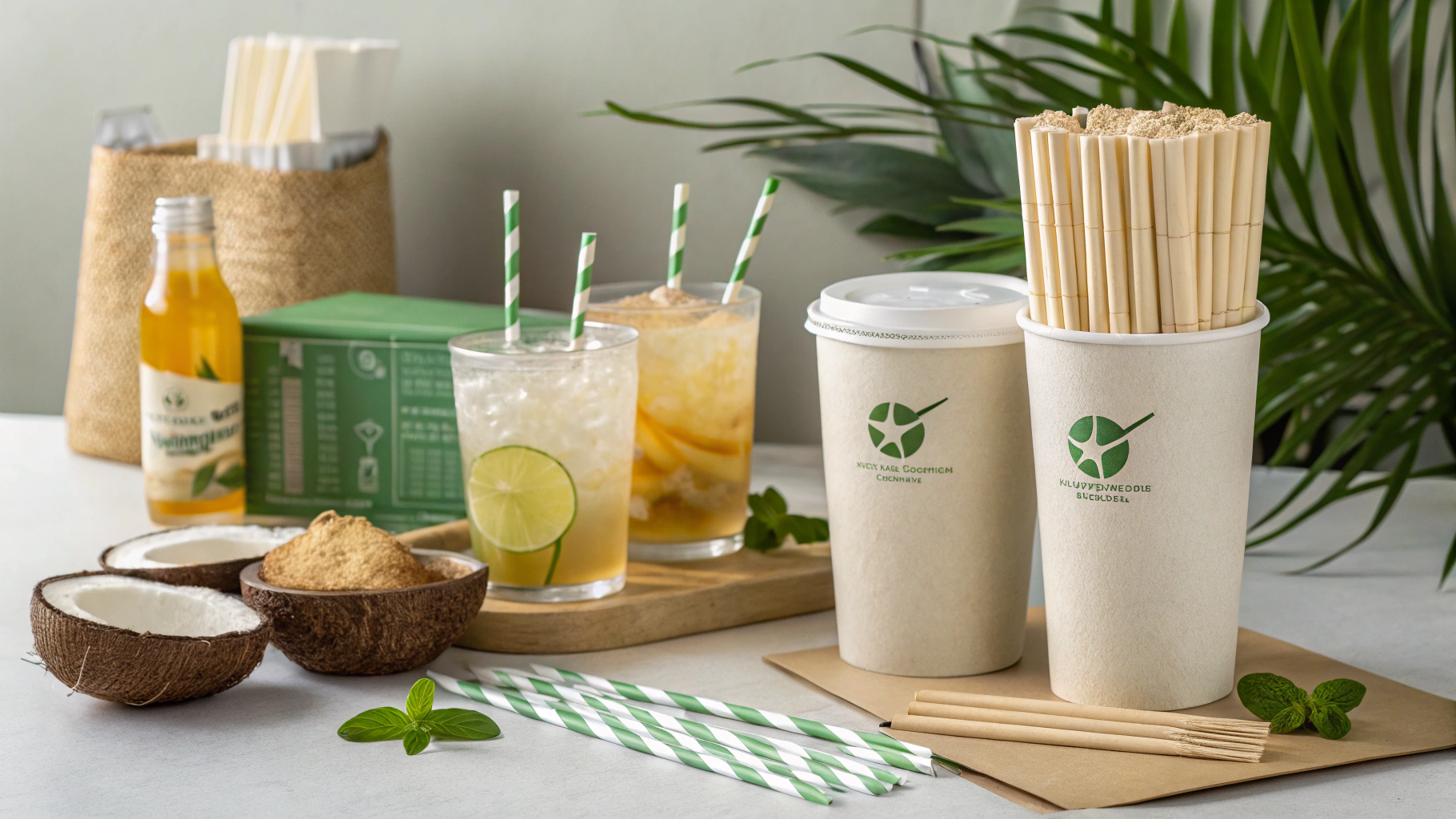
Heb je ooit van een drankje gedronken en je afgevraagd wat de oorsprong is van dat eenvoudige maar functionele buisje dat je gebruikt? Het rietje, iets dat we vaak als vanzelfsprekend beschouwen, heeft een boeiende geschiedenis die verweven is met cultuur, uitvindingen en duurzaamheid. Laten we erin duiken, oké?
Inhoudsopgave
| Sr # | Koppen |
|---|---|
| 1 | De oude oorsprong |
| 2 | Van goud tot roggegras |
| 3 | De geboorte van het moderne rietje |
| 4 | Kunststof neemt het over |
| 5 | Milieuproblemen |
| 6 | Rietjes van suikerriet: Een duurzaam alternatief |
| 7 | Voordelen van suikerrietrietjes |
| 8 | De mondiale adoptiereis |
| 9 | De toekomst van rietjes |
| 10 | Inspiratie putten uit het verleden |
De oude oorsprong
Heeft u er ooit aan gedacht dat onze voorouders van hun favoriete drankjes nipten? De vroegste rietjes waren gemaakt van goud, versierd met de blauwe steen lapis lazuli, en werden door de Sumeriërs gebruikt om bier te drinken. Dit luxeartikel beschermde hen tegen gefermenteerde sedimenten die zich op de bodem van hun potten nestelden.
Van goud tot roggegras
Na verloop van tijd maakten de extravagante gouden rietjes plaats voor meer praktische. Mensen wendden zich tot natuurlijke materialen en rietjes gemaakt van roggegras werden populair. Er was echter een probleem: na enig gebruik werden ze papperig. Je zou toch niet genieten van een slokje met een grasachtige nasmaak, toch?
De geboorte van het moderne rietje
This brings us to Marvin Stone, the man behind the paper drinking straw. In the late 19th century, irritated by the grassy residue of rye straws, Stone wrapped strips of paper around a pencil, glued them together, and voilà! The modern straw was born.
Kunststof neemt het over
As industries evolved, so did the materials. Plastic, being cheap and durable, seemed the perfect replacement for paper. By the mid-20th century, plastic straws dominated the scene. Their flexibility made them popular, especially in healthcare for patients to sip liquids.
Milieuproblemen
However, like a double-edged sword, the durability of plastic became its downfall. Single-use plastic straws began to accumulate, harming marine life and polluting our planet. It was time to reconsider. If only there was a material that combined durability and sustainability?
Rietjes van suikerriet: Een duurzaam alternatief
Enter sugarcane drinking straws. Harnessing the power of nature, these straws offer an eco-friendly solution. Made from sugarcane fibers, they decompose naturally, ensuring a minimal carbon footprint. Isn’t it incredible how innovation can be rooted in nature’s simplicity?
Voordelen van suikerrietrietjes
Not only are sugarcane straws environmentally friendly, but they also provide an enjoyable sipping experience. Free from the problems of rye grass and the environmental concerns of plastic, they seem to be the best of both worlds.
De mondiale adoptiereis
Countries and companies across the globe are acknowledging the benefits of sugarcane drinking straws. With bans on single-use plastics, there’s a growing shift towards these sustainable alternatives.
De toekomst van rietjes
What’s next for the humble drinking straw? As sustainability becomes a global priority, innovations like sugarcane straws set the stage for a greener future.
Inspiratie putten uit het verleden
Looking back, it’s evident that the journey of the drinking straw is like a river, constantly flowing and adapting. And just as rivers often lead back to the ocean, our innovations, like the sugarcane drinking straw, are leading us back to nature.
In conclusion, the history of drinking straws is not just a tale of innovation but also a reflection of society’s values and priorities. As we move forward, let’s cherish the lessons of the past and pave the way for a sustainable future.
FAQs:
Q1: When were sugarcane drinking straws introduced?
A1: Sugarcane drinking straws are a relatively recent innovation, gaining prominence in the last decade as an eco-friendly alternative to plastic straws.
Q2: How long do sugarcane drinking straws last in a drink?
A2: Sugarcane drinking straws can last several hours in a drink without getting soggy, making them a viable replacement for single-use plastic straws.
Q3: Are sugarcane drinking straws compostable?
A3: Yes, sugarcane drinking straws are biodegradable and can be composted, returning to nature within a short span.
Q4: How do sugarcane drinking straws differ from paper straws?
A4: While both are eco-friendly, sugarcane straws tend to be sturdier and longer-lasting in drinks compared to paper straws.
Q5: Why is there a push for alternatives to plastic straws?
A5: Plastic straws are non-biodegradable and contribute to environmental pollution, especially harming marine life. Alternatives like sugarcane drinking straws aim to reduce this environmental impact.






